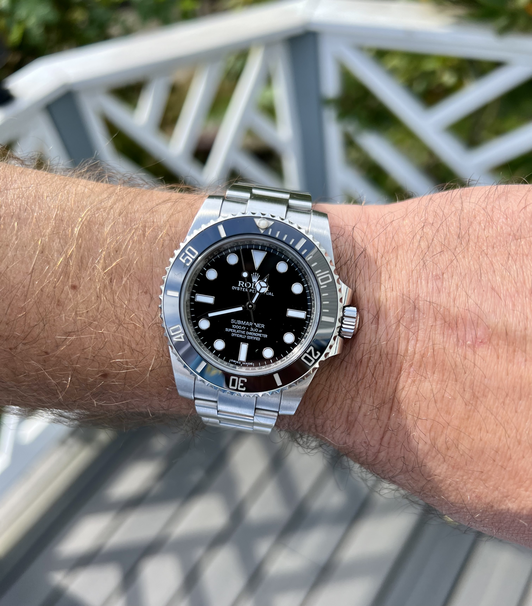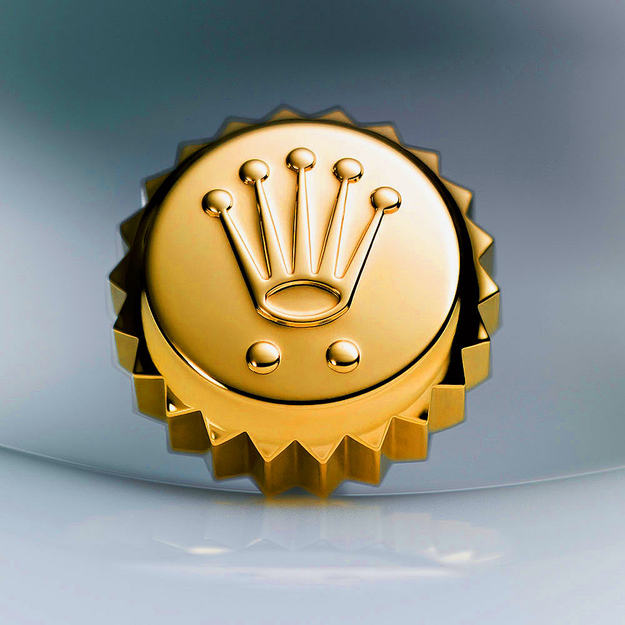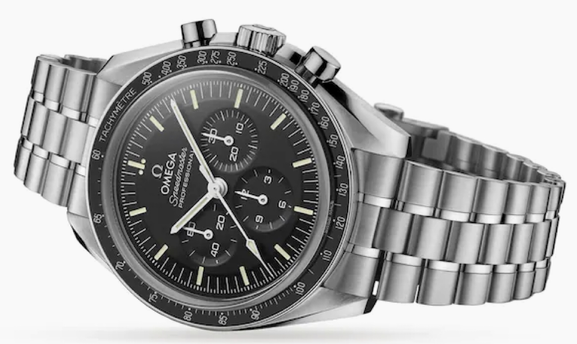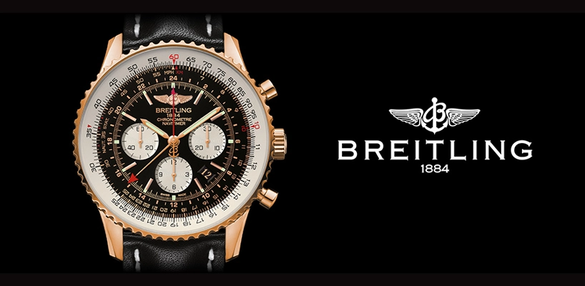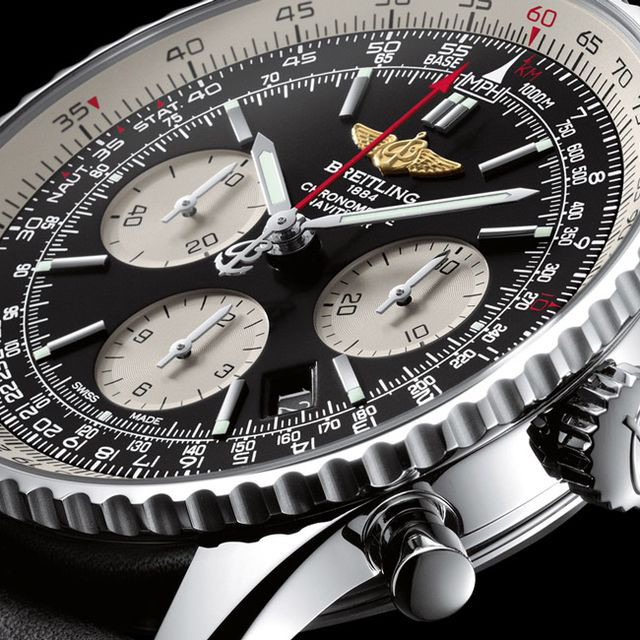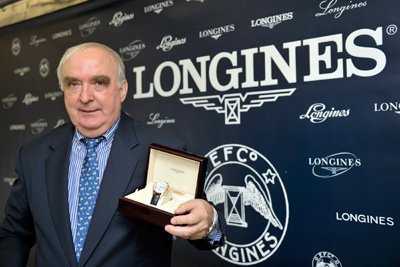|
Today we are going to talk about the ultimate russian made affordable automatic diving watch, the Vostok Amphibia. This is not a watch any basic watch collector will know about but rather one reserved for true enthusiasts and those looking for a reliable, affordable, and stylish timepiece with rich history. The Vostok brand dates back to the pre world war 2 era and was founded in 1942. Their current headquarters are in Chistopol, a small town located on the Kama river in Tatarstan. The company quickly shifted to only manufacturing defense tools for the russian forces during WW2 but as soon as the axis powers were defeated they went right back to producing timepieces, clocks, and movements for other companies as well.
A couple fun facts.. 1. Vostok ( Boctok ) actually means "East" 2. Vostok was named after a space program just as Raketa and Poljot were. 3. The company was appointed an official supplier of watches for the Ministry of Defense in the Soviet Union circa 1965. The Vostok Amphibian classic ( 710059 ) or "Scuba Dude" watch I own has a light bluish turquoise dial almost resembling a slightly patina'd watch face. It sits 11MM tall and is housed in 41MM steel cushion style case which sits super comfortable on the wrist. The circular mid size screw down crown has a clutch mechanism which is often misinterpreted by buyers as low quality because of its wobble when unscrewed. This is done on purpose and manufactured this way because if the crown were to release or break off while underwater the time will not be effected nor changed. The crown basically disengages itself slightly from the movement when unscrewed which gives it a wobble. I find this quite interesting and also a very subjective feature. Anyway, the watch has applied lumed indices with a beautiful diver printed on the dial, hence the name Scuba Dude! Amphibias come equipped with a friction based bezel compared to a normal unidirectional clicking bezel which is sort of unsatisfying , but for 75 USD , I cannot really complain. If there is one thing I can complain about it is the stock bracelet supplied with the watch! This bracelet is as bad as it gets and must be switched out immediately, atleast for me. Some great alternatives for the bracelet I have tried and worn are Mesh bands, Millanese , leather straps, and of course rubber straps. The caseback is screwed down and has a few russian words inscribed which most people have no idea what they actually mean, but Google Translate is super helpful in clearing that up! Listen, for 75 dollars you will not find a better everyday automatic timepiece with an in-house movement, rich history, decent timekeeping at about plus ten seconds a day while looking good on the wrist at the same time. I have left a few pictures below of my Amphibia for your viewing and also a link where you can buy a small piece of Russian history for under 100 bucks. Does it get better than that? I don't think so. *Please Note the Band on the watch in the pictures is a Barton's Silicone Quick-Release Strap* OFFICIAL SPECIFICATIONS: Diameter: 41MM Model #: 710059 Depth Rating: 200M Crown: Screw Down Width: 11MM Lug To Lug: 45MM Lug Width: 22MM Movement: 6041 In-House Vostok Caliber Automatic Jewels: 31 Power Reserve: 31 Hours Crystal: Antique Plastic Domed Link on AMAZON for VOSTOK Watches: http://amzn.to/2n1A2Rs
3 Comments
AuthorErik Martin Today we are going to talk about and examine one of my favorite timepieces in my current collection, that is the OMEGA Seamaster Planet Ocean 42MM with Omega In-house 8500 Co-Axial automatic movement. I have made a video about this watch comparing it to the Rolex Submariner( thats how good it is ) 114060 in my current collection as well which will be linked below for your viewing. Let’s start off with some basic specifications on this 600M Automatic diver from powerhouse OMEGA. Diameter: 42 MM Width: 15.7 MM Lug Width: 20MM Crown: Screw Down Water Resistance: 600M , Helium Escape Valve Crystal: Domed Sapphire Crystal Front and Back with AR ( Anti-Reflective ) Coating Front / Under Movement: Calibre 8500 Co-Axial Chronometer Certified, Silicon Balance and Hair Spring ( Upgrade from Original 8500 ) Caseback: Exhibition Sapphire Caseback Displaying beautiful Geneva Stripes on Movement Power Reserve: 60 Hours ( Impressive ) Accuracy: Regulated in 5 Positions Chronometer Certified ( IN REALITY +2 Seconds a Day ) Bezel: 120 Click Unidirectional Ceramic Bezel with 60MIN Dive Markings Price: $6200 Retail from an Authorized Dealer Competitors: Rolex Submariner , Breitling Superocean , Others. Let me start off by saying I was never a big fan of OMEGA watches until I bought this watch. Omega never appealed to my tastes as other brands such as Rolex and Breitling due to them being less Flashy, and more straightforward timepieces in a way. They appear as tools to me rather than a statement or a "blingy" type of watch. They are definitely meant for the true watch enthusiast and collector. Omega has a very rich long history and has proved themselves over and over again throughout their production era. The planet ocean comes in two different sizes for this reference number - 42 and 45.5. I chose the 42MM because my wrist measures in at only 6.25" so I had to. The watch fits my wrist just fine , a little on the bigger side but definitely conforms to the wrist with the perfectly curved end links on the bracelet. The movement inside is not a long tried and tested movement but it is a rather new movement developed in house by OMEGA and is quite impressive for the price point. Let me remind you, you can buy one of these watches brand new for around $3800 on the grey market or even less used. Inside this manufactured Chronometer certified movement resides 39 Jewels , a very nice finished Rotor with Geneva Stripes, a Twin Barrel system helping with that power reserve , all displayed through an exhibition screwed down sapphire caseback, and does it Mesmorize me whenever I take a look at it ! Some enthusiasts may complain that the casebook has added some extra thickness to the piece and sits too chunky on the wrist but I do not have a problem at all and rather like a thicker watch anyway. The bracelet is completely brushed and extremely fluid while the links are held in with polished screws. The lume on this watch is also marvelous if you have watched my full review on youtube. While a Submariner being one of the most Iconic and popular diving watches in the luxury sector only gets 300M of water resistance, Omega goes above and beyond to show Rolex what they are made of equipping this watch with a Helium escape valve and 600M of true water resistance, all at a price point of 50 Percent less than a Rolex Submariner Ceramic model. In terms of Accuracy this watch keeps excellent time and has been since I purchased it 1.5 years ago brand new gaining +1 +2 seconds a day at max, pretty incredible for $3700 or $6200 , Right? Please do check out the video review where you can see a live Lume Shot and more detailed video of the watch |
Archives
February 2024
|
ROLEX HISTORY
Rolex is a Swiss luxury watch brand that was founded in 1905 by Hans Wilsdorf and Alfred Davis in London, England. The company originally began as Wilsdorf and Davis, but it was later renamed to Rolex in 1908.
The first Rolex watches were not manufactured in-house, but instead were made by other watchmakers and then branded with the Rolex name. However, Wilsdorf had a vision of creating a wristwatch that was both reliable and accurate, and he set out to develop his own movements.
In 1910, Rolex became the first wristwatch to receive the Swiss Certificate of Chronometric Precision, which was a testament to the accuracy of the watch. Over the years, Rolex continued to innovate and develop new technologies and features, such as the first waterproof wristwatch in 1926, the first self-winding mechanism in 1931, and the first wristwatch with a date display in 1945.
Rolex has also been associated with several famous individuals, including explorers, athletes, and celebrities. For example, Sir Edmund Hillary and Tenzing Norgay wore Rolex watches when they became the first people to reach the summit of Mount Everest in 1953. Rolex has also been the official timekeeper of several sporting events, including Wimbledon and the Formula 1 Grand Prix.
Today, Rolex is one of the most recognized and respected luxury watch brands in the world, known for its quality, precision, and timeless style.
The first Rolex watches were not manufactured in-house, but instead were made by other watchmakers and then branded with the Rolex name. However, Wilsdorf had a vision of creating a wristwatch that was both reliable and accurate, and he set out to develop his own movements.
In 1910, Rolex became the first wristwatch to receive the Swiss Certificate of Chronometric Precision, which was a testament to the accuracy of the watch. Over the years, Rolex continued to innovate and develop new technologies and features, such as the first waterproof wristwatch in 1926, the first self-winding mechanism in 1931, and the first wristwatch with a date display in 1945.
Rolex has also been associated with several famous individuals, including explorers, athletes, and celebrities. For example, Sir Edmund Hillary and Tenzing Norgay wore Rolex watches when they became the first people to reach the summit of Mount Everest in 1953. Rolex has also been the official timekeeper of several sporting events, including Wimbledon and the Formula 1 Grand Prix.
Today, Rolex is one of the most recognized and respected luxury watch brands in the world, known for its quality, precision, and timeless style.
OMEGA Watches History
Omega is a Swiss luxury watch brand founded in 1848 by Louis Brandt in La Chaux-de-Fonds, Switzerland. The brand initially operated under the name La Generale Watch Co. and produced pocket watches.
In 1894, Omega revolutionized the watch industry with the introduction of the 19-ligne Omega Calibre, which was more accurate and reliable than any other watch movement of the time. This innovation earned Omega numerous awards and accolades, and the brand quickly became known for its precision and quality.
In 1903, Omega was chosen as the official timekeeper for the Gordon Bennett Cup, an international balloon race. This marked the beginning of Omega's long-standing relationship with sports timing and its reputation as a reliable and accurate timekeeper.
In 1932, Omega became the first brand to be awarded the Olympic Cross of Merit for its outstanding contribution to sports timing at the Olympic Games. Since then, Omega has been the official timekeeper for numerous Olympic Games, and its timekeeping technology has continued to evolve and improve.
In the 1950s and 1960s, Omega's watches were worn by famous explorers and adventurers, including Sir Edmund Hillary and Tenzing Norgay during their ascent of Mount Everest in 1953, and Jacques Cousteau during his underwater expeditions.
In the 1960s, Omega introduced the Speedmaster, a chronograph watch that was originally designed for motorsports but became famous as the first watch worn on the moon during the Apollo 11 mission in 1969. The Speedmaster has since become one of Omega's most iconic and sought-after models.
Today, Omega continues to innovate and produce high-quality watches, including the Seamaster, Constellation, and De Ville collections. The brand also continues to be the official timekeeper for numerous sporting events, including the Olympic Games and the America's Cup.
In 1894, Omega revolutionized the watch industry with the introduction of the 19-ligne Omega Calibre, which was more accurate and reliable than any other watch movement of the time. This innovation earned Omega numerous awards and accolades, and the brand quickly became known for its precision and quality.
In 1903, Omega was chosen as the official timekeeper for the Gordon Bennett Cup, an international balloon race. This marked the beginning of Omega's long-standing relationship with sports timing and its reputation as a reliable and accurate timekeeper.
In 1932, Omega became the first brand to be awarded the Olympic Cross of Merit for its outstanding contribution to sports timing at the Olympic Games. Since then, Omega has been the official timekeeper for numerous Olympic Games, and its timekeeping technology has continued to evolve and improve.
In the 1950s and 1960s, Omega's watches were worn by famous explorers and adventurers, including Sir Edmund Hillary and Tenzing Norgay during their ascent of Mount Everest in 1953, and Jacques Cousteau during his underwater expeditions.
In the 1960s, Omega introduced the Speedmaster, a chronograph watch that was originally designed for motorsports but became famous as the first watch worn on the moon during the Apollo 11 mission in 1969. The Speedmaster has since become one of Omega's most iconic and sought-after models.
Today, Omega continues to innovate and produce high-quality watches, including the Seamaster, Constellation, and De Ville collections. The brand also continues to be the official timekeeper for numerous sporting events, including the Olympic Games and the America's Cup.
BREITLING Watches History
Breitling is a Swiss luxury watch brand that was founded in 1884 by Léon Breitling in the town of Saint-Imier in the Canton of Bern, Switzerland. Initially, the company specialized in producing chronographs and other precision timepieces for scientific and industrial purposes.
In 1915, Breitling introduced the first wrist-worn chronograph with a separate pusher to control the start, stop, and reset functions, which made it easier to use than previous models. This innovation helped establish Breitling as a leading maker of chronographs and other precision timepieces.
During the 1930s and 1940s, Breitling continued to innovate with the introduction of the first chronograph with a second independent pusher, which allowed for the recording of multiple elapsed times. The company also developed the Huit Aviation Department, which produced wristwatches for pilots and other aviation professionals.
In the 1950s, Breitling introduced the Navitimer, a wristwatch with a built-in slide rule that allowed pilots to perform complex calculations in-flight. The Navitimer became an instant classic and remains one of Breitling's most popular models to this day.
In the 1960s, Breitling continued to produce innovative timepieces, including the Chrono-Matic, which was the first automatic chronograph movement with a micro-rotor. The company also introduced the Emergency, a wristwatch with a built-in distress beacon that could be activated in case of an emergency.
In the years since, Breitling has continued to produce innovative and high-quality timepieces for a variety of applications, including aviation, diving, and sports. The company has also maintained a strong commitment to precision and accuracy, with many of its watches featuring COSC-certified movements. Today, Breitling is recognized as one of the world's leading luxury watch brands, with a reputation for innovation, quality, and style.
In 1915, Breitling introduced the first wrist-worn chronograph with a separate pusher to control the start, stop, and reset functions, which made it easier to use than previous models. This innovation helped establish Breitling as a leading maker of chronographs and other precision timepieces.
During the 1930s and 1940s, Breitling continued to innovate with the introduction of the first chronograph with a second independent pusher, which allowed for the recording of multiple elapsed times. The company also developed the Huit Aviation Department, which produced wristwatches for pilots and other aviation professionals.
In the 1950s, Breitling introduced the Navitimer, a wristwatch with a built-in slide rule that allowed pilots to perform complex calculations in-flight. The Navitimer became an instant classic and remains one of Breitling's most popular models to this day.
In the 1960s, Breitling continued to produce innovative timepieces, including the Chrono-Matic, which was the first automatic chronograph movement with a micro-rotor. The company also introduced the Emergency, a wristwatch with a built-in distress beacon that could be activated in case of an emergency.
In the years since, Breitling has continued to produce innovative and high-quality timepieces for a variety of applications, including aviation, diving, and sports. The company has also maintained a strong commitment to precision and accuracy, with many of its watches featuring COSC-certified movements. Today, Breitling is recognized as one of the world's leading luxury watch brands, with a reputation for innovation, quality, and style.
Longines
Longines is a Swiss luxury watch company that was founded in 1832 by Auguste Agassiz in the town of Saint-Imier, Switzerland. The company has a long and prestigious history in the world of watchmaking, and has been responsible for many innovations and milestones in the industry.
In the early days, Longines primarily produced pocket watches, and quickly gained a reputation for precision and accuracy. By the end of the 19th century, Longines had become one of the leading watchmakers in the world. In 1912, the company introduced the first chronograph wristwatch, which was quickly adopted by the military and aviation communities.
In the 1920s and 1930s, Longines continued to innovate with the introduction of the world's first quartz clock and the first wristwatch with an automatic winding mechanism. During World War II, Longines produced wristwatches for the British Royal Air Force, and continued to produce military watches for several decades afterwards.
In the post-war years, Longines became known for its elegant and sophisticated watches, particularly its "Conquest" line of watches. In the 1950s and 1960s, Longines was a favorite of celebrities and politicians, and its watches were frequently seen on the wrists of Elvis Presley, John F. Kennedy, and other famous figures.
In recent years, Longines has continued to produce high-quality watches that combine traditional Swiss craftsmanship with modern technology. The company is particularly known for its sport watches, including its "HydroConquest" line of diving watches and its "Conquest Classic" line of chronographs.
Today, Longines is owned by the Swatch Group, and remains a leading brand in the luxury watch industry. Its watches are prized for their precision, reliability, and timeless style.
In the early days, Longines primarily produced pocket watches, and quickly gained a reputation for precision and accuracy. By the end of the 19th century, Longines had become one of the leading watchmakers in the world. In 1912, the company introduced the first chronograph wristwatch, which was quickly adopted by the military and aviation communities.
In the 1920s and 1930s, Longines continued to innovate with the introduction of the world's first quartz clock and the first wristwatch with an automatic winding mechanism. During World War II, Longines produced wristwatches for the British Royal Air Force, and continued to produce military watches for several decades afterwards.
In the post-war years, Longines became known for its elegant and sophisticated watches, particularly its "Conquest" line of watches. In the 1950s and 1960s, Longines was a favorite of celebrities and politicians, and its watches were frequently seen on the wrists of Elvis Presley, John F. Kennedy, and other famous figures.
In recent years, Longines has continued to produce high-quality watches that combine traditional Swiss craftsmanship with modern technology. The company is particularly known for its sport watches, including its "HydroConquest" line of diving watches and its "Conquest Classic" line of chronographs.
Today, Longines is owned by the Swatch Group, and remains a leading brand in the luxury watch industry. Its watches are prized for their precision, reliability, and timeless style.
Tissot
Tissot is a Swiss watch brand that was founded in 1853 by Charles-Félicien Tissot and his son Charles-Émile Tissot in the town of Le Locle, Switzerland. The company has a long and rich history in the world of watchmaking, and has been responsible for many innovations and milestones in the industry.
In the early days, Tissot primarily produced pocket watches, and quickly gained a reputation for quality and precision. By the end of the 19th century, Tissot was one of the largest watchmakers in Switzerland, and was exporting its watches to countries around the world.
In the early 20th century, Tissot continued to innovate with the introduction of the first non-magnetic wristwatch, the first dual time-zone watch, and the first watch with a plastic case. During World War II, Tissot produced watches for the Allied forces, and continued to produce military watches for several decades afterwards.
In the post-war years, Tissot became known for its elegant and sophisticated watches, particularly its "Tissot Visodate" line of watches, which featured a date function and a distinctive "T" logo on the dial. In the 1970s, Tissot was one of the first Swiss watch brands to introduce quartz watches, which quickly became popular due to their accuracy and affordability.
In recent years, Tissot has continued to produce high-quality watches that combine traditional Swiss craftsmanship with modern technology. The company is particularly known for its sport watches, including its "T-Touch" line of watches, which feature touch-screen technology and a range of functions such as altimeter, compass, and thermometer.
Today, Tissot is part of the Swatch Group, and remains a leading brand in the watch industry. Its watches are prized for their quality, durability, and stylish design, and are worn by watch enthusiasts and collectors around the world.
In the early days, Tissot primarily produced pocket watches, and quickly gained a reputation for quality and precision. By the end of the 19th century, Tissot was one of the largest watchmakers in Switzerland, and was exporting its watches to countries around the world.
In the early 20th century, Tissot continued to innovate with the introduction of the first non-magnetic wristwatch, the first dual time-zone watch, and the first watch with a plastic case. During World War II, Tissot produced watches for the Allied forces, and continued to produce military watches for several decades afterwards.
In the post-war years, Tissot became known for its elegant and sophisticated watches, particularly its "Tissot Visodate" line of watches, which featured a date function and a distinctive "T" logo on the dial. In the 1970s, Tissot was one of the first Swiss watch brands to introduce quartz watches, which quickly became popular due to their accuracy and affordability.
In recent years, Tissot has continued to produce high-quality watches that combine traditional Swiss craftsmanship with modern technology. The company is particularly known for its sport watches, including its "T-Touch" line of watches, which feature touch-screen technology and a range of functions such as altimeter, compass, and thermometer.
Today, Tissot is part of the Swatch Group, and remains a leading brand in the watch industry. Its watches are prized for their quality, durability, and stylish design, and are worn by watch enthusiasts and collectors around the world.

















